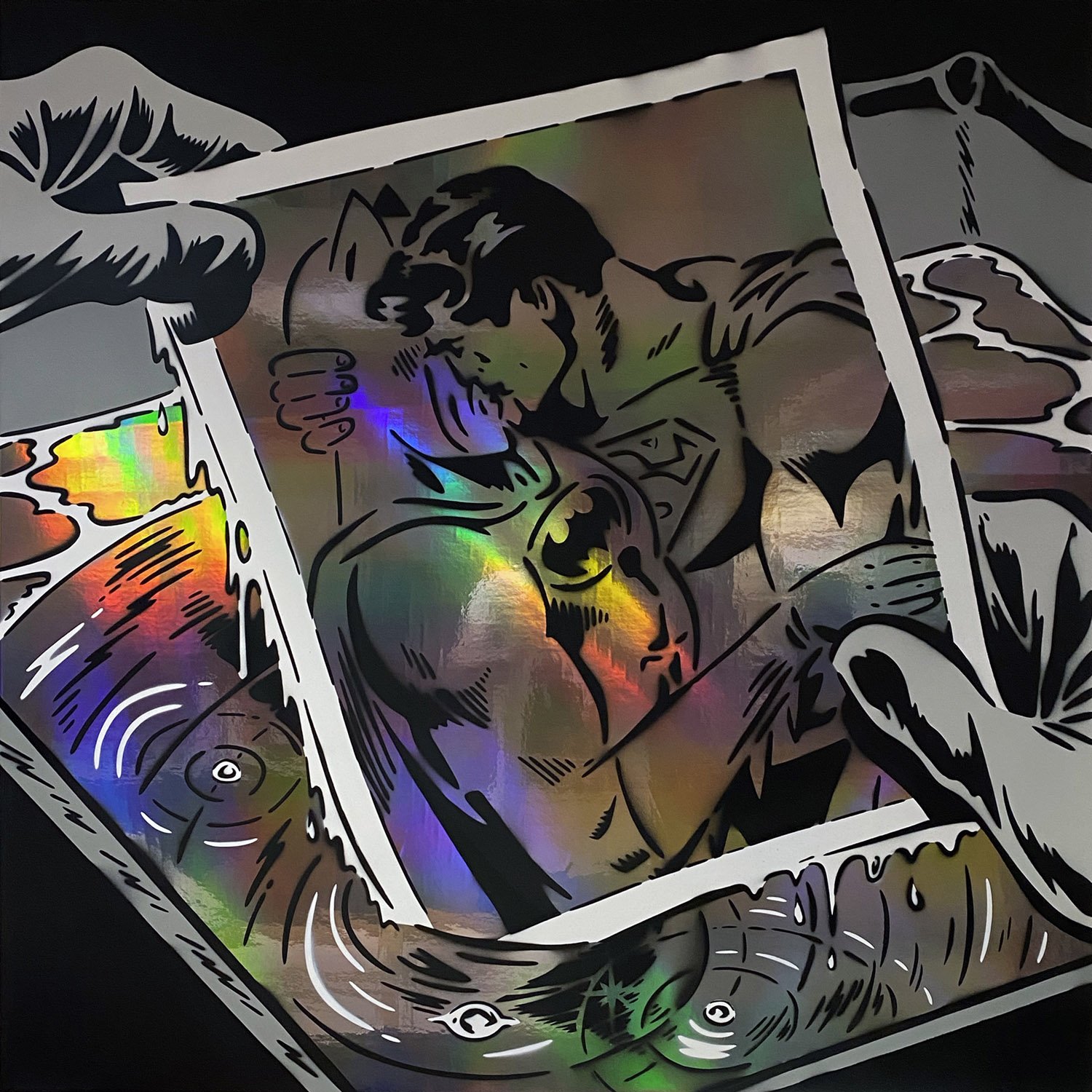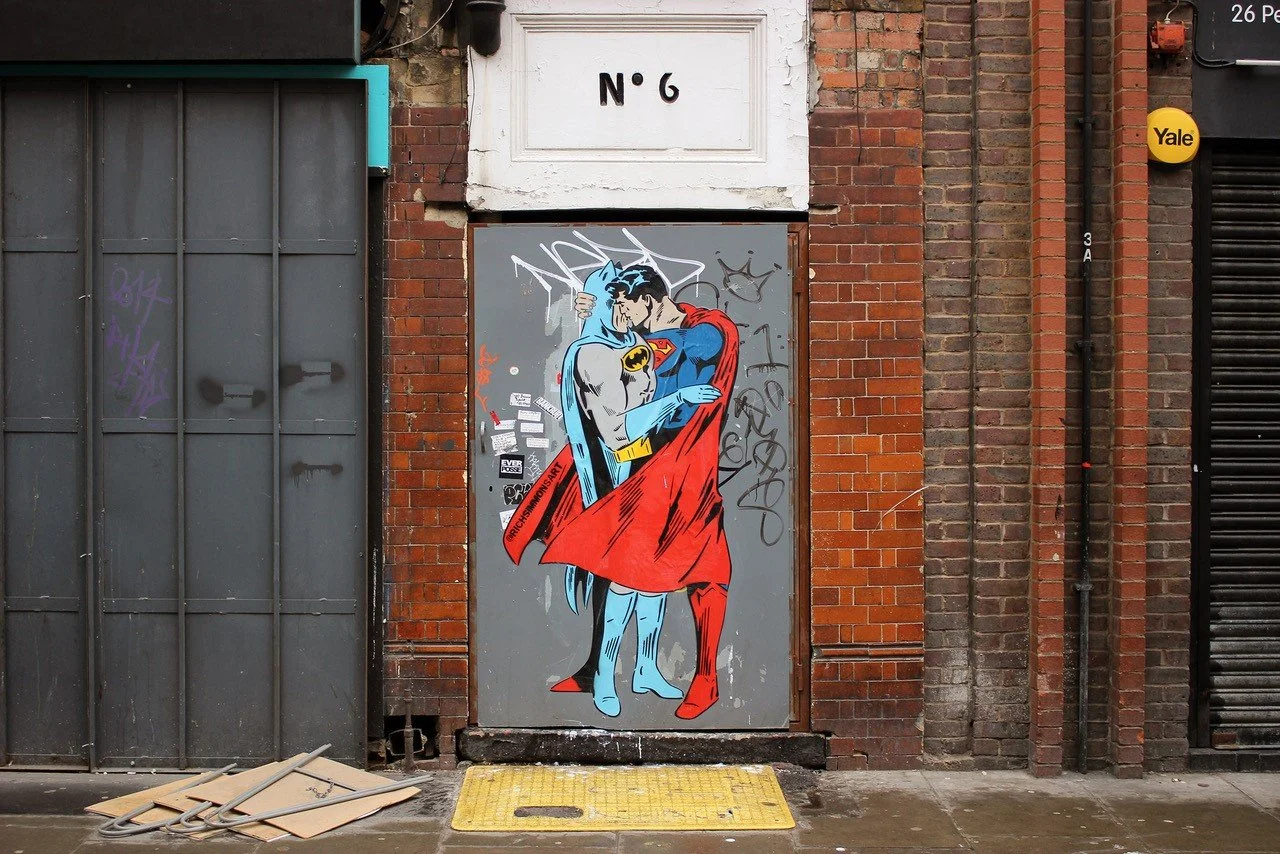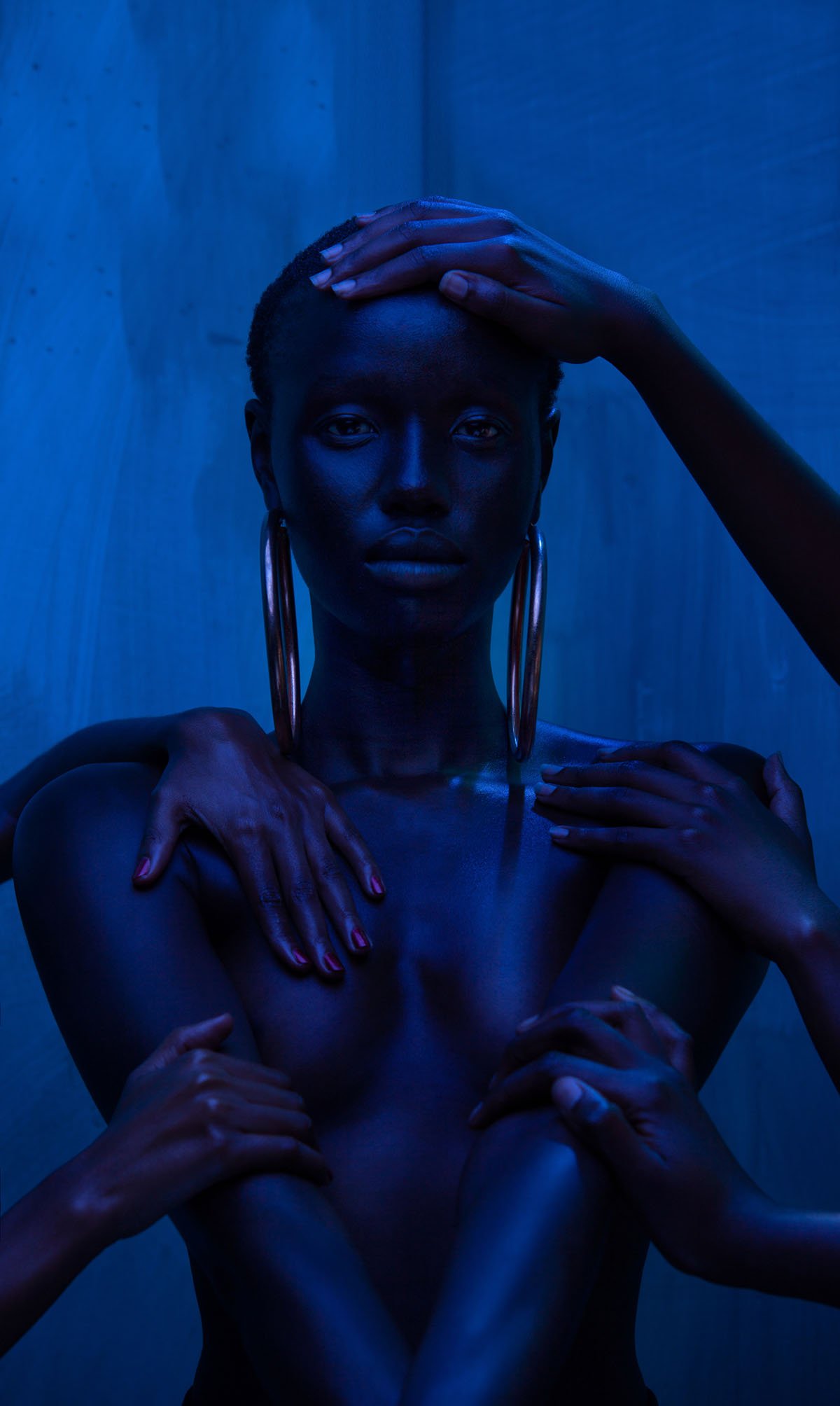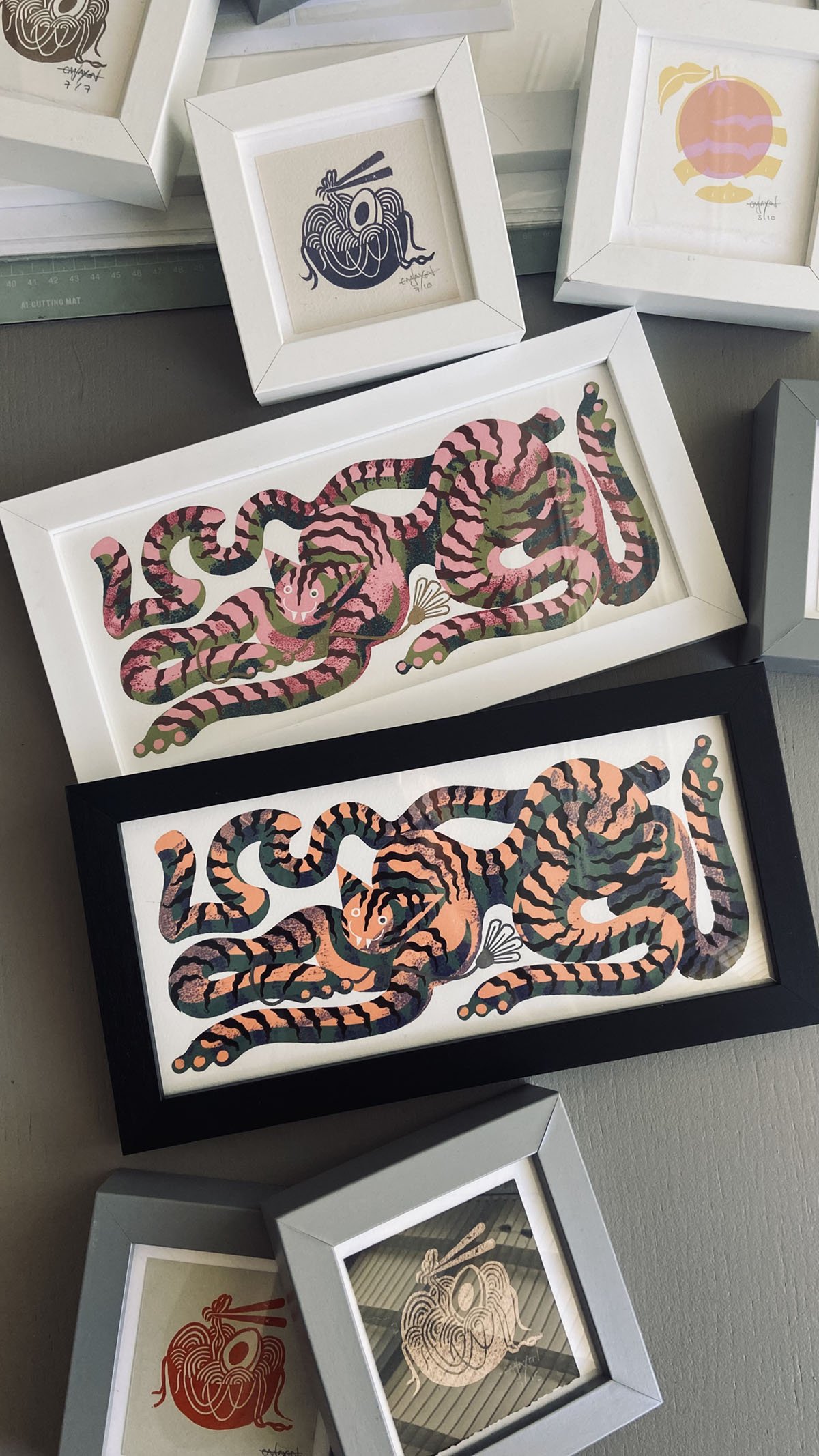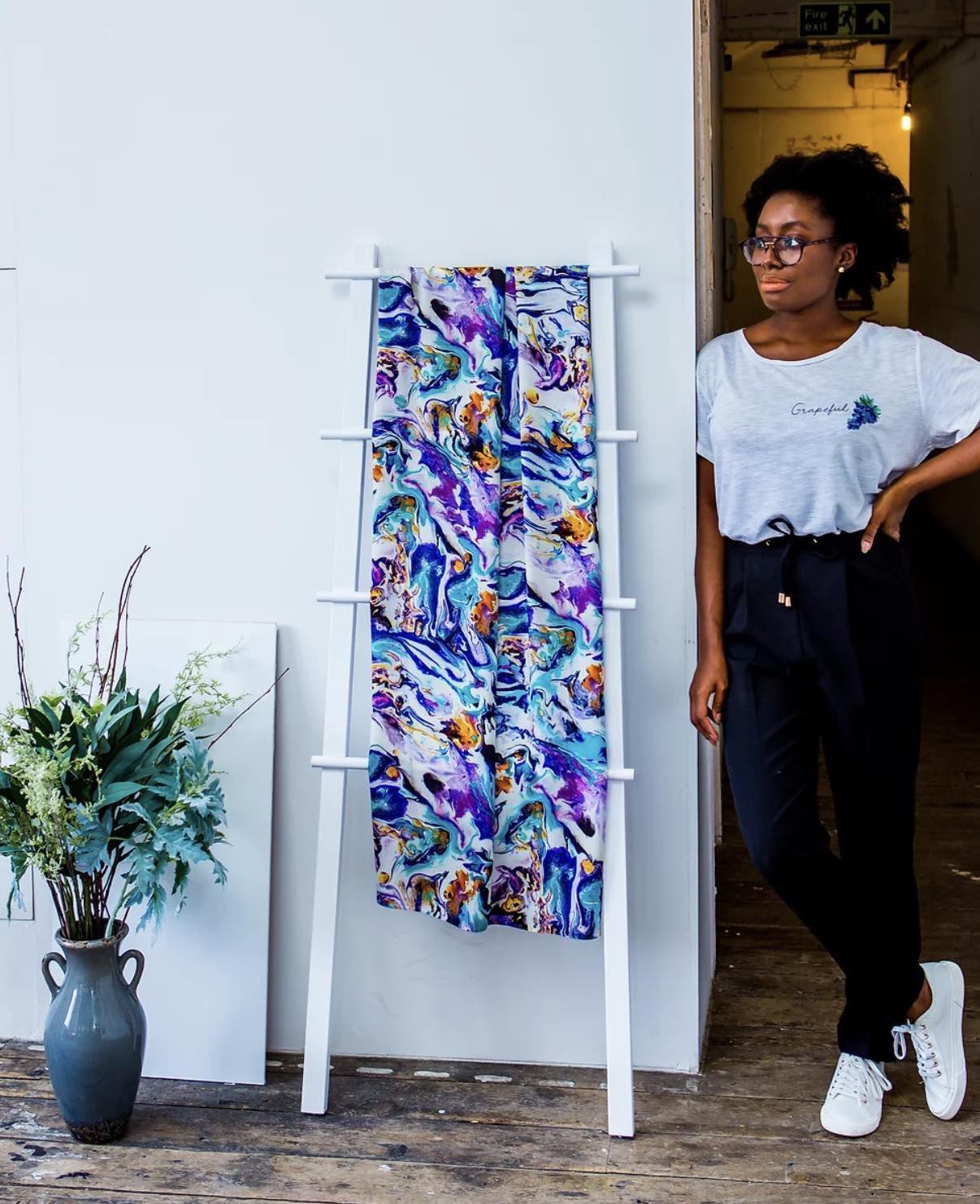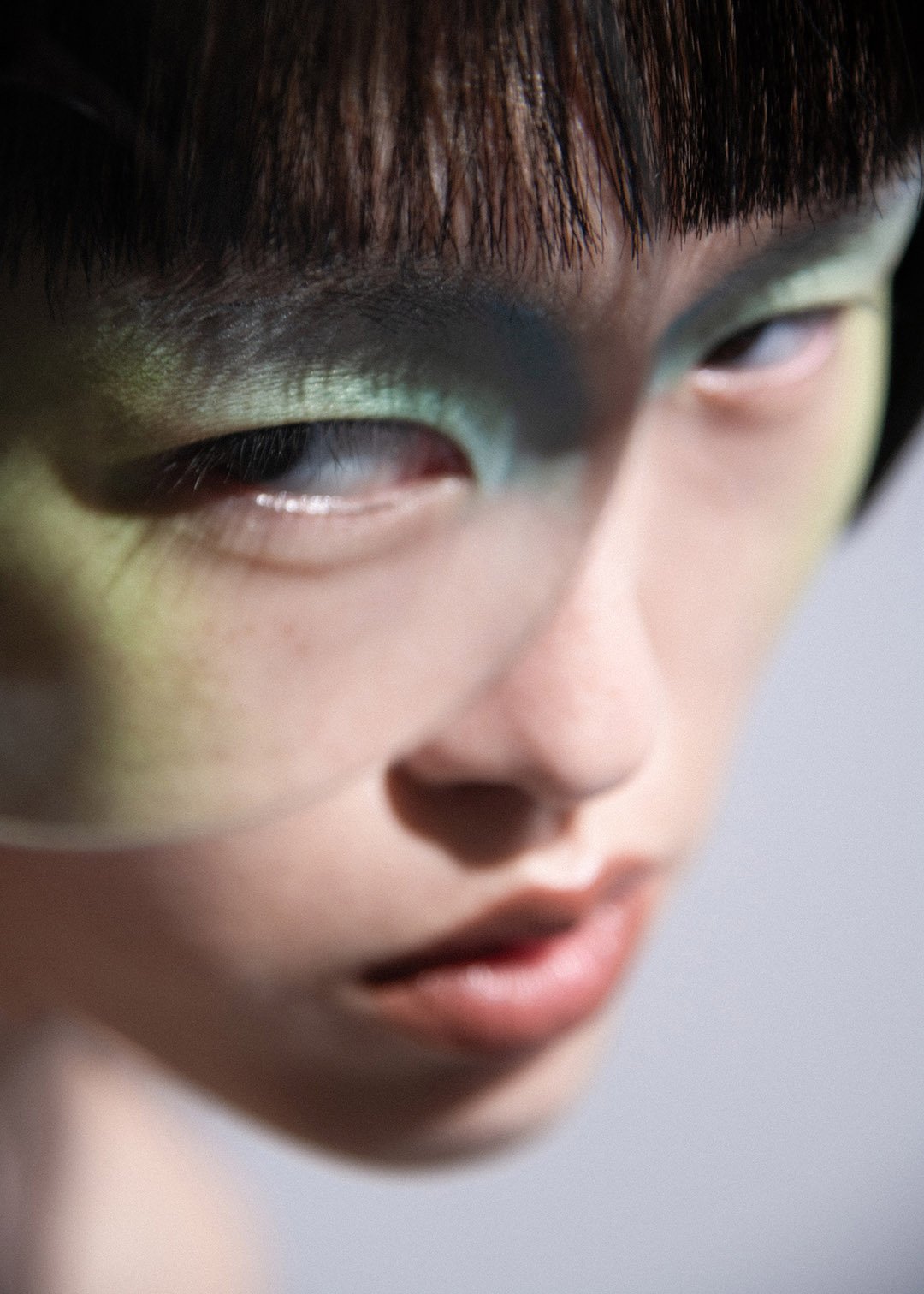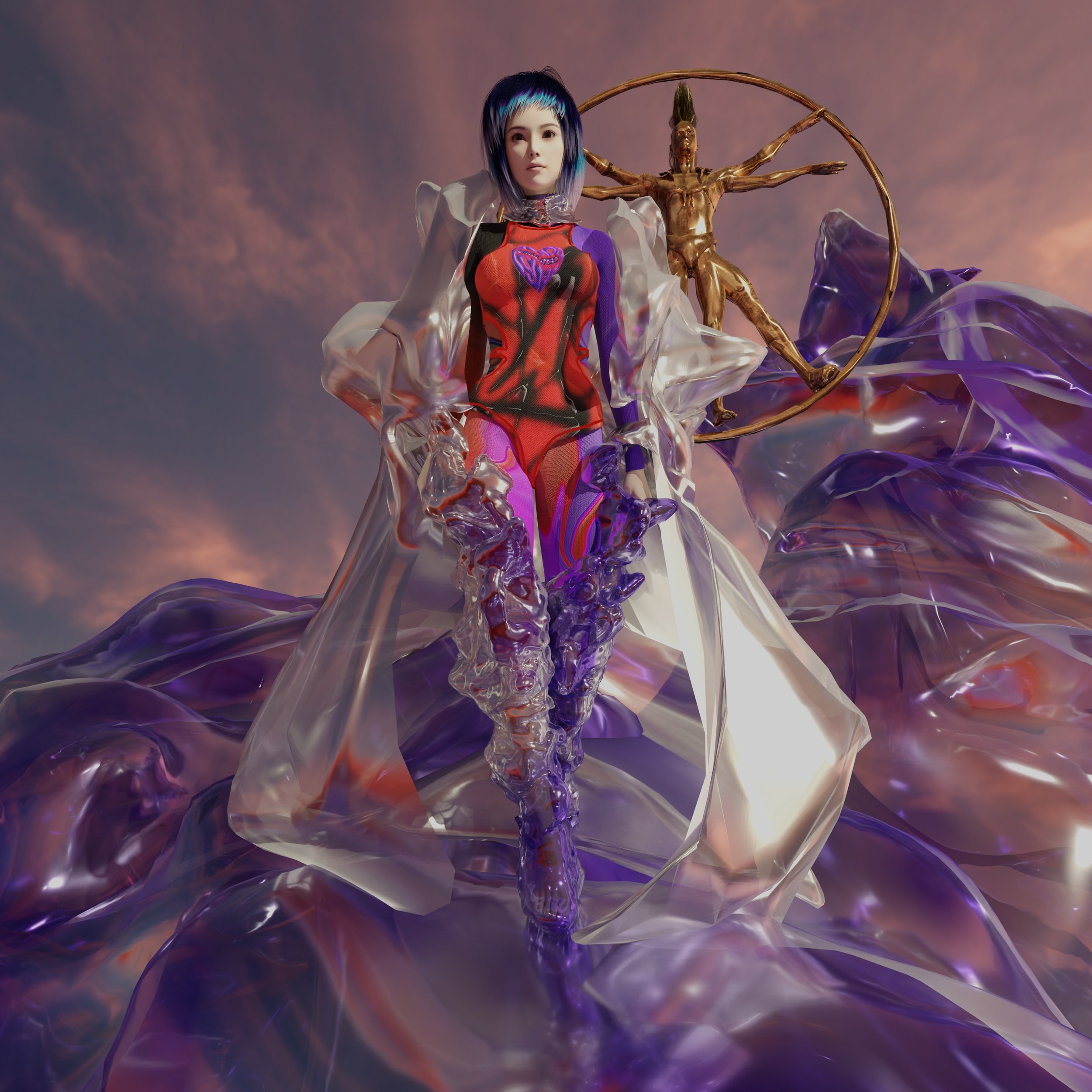When art saves lives: In interview with Rich Simmons
About
Rich Simmons is leading the next wave of artists pushing a new era of modern pop art. The award-winning British artist's bold use of colour and commentary is unmistakable, addressing stories of romance, lust, mental health and social injustice in his work. We find out more about his practice, and his ambitions for his creative therapy organisation Art Is The Cure CIC.
Share this article
how did your journey into pop art begin?
I fell in love with comic books and street art at a similar time. These very bold, graphic styles merged in my mind – that fusion can be seen so much in pop art. The bold colours, the thick line work, the combination of illustration, cinematic composition and storytelling really captured me, but I wanted to do my version of pop art. I took elements from all of these styles and found ways to create stencils like I did with street art, and create bold paintings that jumped off the canvas like the heroes did in the comic books I read. Pop art ticked all the boxes to bring my different skills, passions and inspirations together into one cohesive style.
It’s been said you “paint like a punk rocker” – can you tell us more about the key themes and inspirations behind your work?
I love to create reactions and evoke emotions. I want to grab peoples' attention and keep them in front of my work to scratch through the layers and understand the story more. I admire artists, storytellers, musicians and performers who have that effect on their audiences, and I try and find inspiration in the different methods they employ to share their art and captivate people. I think the "paints like a punk rocker" quote is amazing because my work has that DIY punk attitude, where I’ve taught myself everything and found my own style, my own energy, and I’m not apologetic about sharing that. Whether it's in a gallery, a piece of street art or now digitally with NFTs, I get to tell my story and express my views in my own way without having to answer to anyone. I love that freedom to be able to create outside of the box, unconstrained by rules.
“Art saved my life. When I went through difficult times, I expressed that angst and pain through art – it felt like a weight lifting when I got that creative release.”
Does your identity manifest through your work in any way?
As much as I want to tell stories about things I'm passionate about, use colours I love and techniques I find beautiful, sometimes in order to create a piece in a way that is true to the message within I have to step back and do what is right for the artwork. The best musicians know how to perform solos, but what makes them great is doing what is best for the song, and if that means sacrificing a rockstar moment to create the song they will take a backseat and let the song be the star. If I could, I would paint a lot more skulls and do pop art versions of Da Vinci pieces, but that's just because I enjoy those subject matters. But I am creating work that other people want in their homes too so I will find a happy medium where I can enjoy the process, love the work I create, and know it will look good in my studio, in a gallery and in a collector's home.
Which part of your creative process would you say has been most cathartic for you?
Stencils are a culmination of design work, illustration, engineering and then the immediacy of spray paint so it ticks a lot of boxes of techniques that I love. Part of the process of creating a stencil is building out the layers in Adobe Photoshop so I know how it would work together to create all those layers. So taking this process and turning it into an NFT project seemed like a natural progression. As much as I love the ability to use technology to engineer a collection, there is always something more cathartic and emotional about using my hands to making something. Whether that's cutting the stencils, holding the spray paint can or lifting that final stencil off to reveal the painting, there's nothing like a real canvas you can touch and hang on a wall.
Can you tell us more about your creative therapy project, Art is the Cure, and your journey into mental health advocacy?
Art saved my life. When I went through difficult times and struggled to get that out of my system, I turned to creativity and expressed my angst and pain through art, and it felt like a weight lifting when I got that creative release. Whether it was drawing, writing poetry, playing music or going out for a skate, it all helped me find a healthy release – and that's when I realised I was doing my own version of creative therapy. I was using artistic expression instead of self-harm or drugs like I saw friends doing. It was this realisation that made me want to commit my energy to trying to inspire others to find their own version of what I was doing. Whatever their issue, whatever their creative expression, they could find a cure through art in some capacity. And that's how Art Is The Cure was created, when I was 22. Now I take this story and message into schools, giving talks and running workshops, and finding new ways to inspire people to start their own creative journey of healing.
"I wish more people would embrace their inner artist, the world would be a more colourful place if they did."
What role do you think art and creativity play in enabling self-expression?
Creativity in any form is a healthy form of release. Applying your imagination in a constructive way is an art form. Whatever results come from that, whether it's a simple act of release or it turns into something that can become a career path, the first step is embracing creativity. The versatility of creativity is endless, it doesn’t discriminate and the benefits can be endless. I wish more people would embrace their inner artist, the world would be a more colourful place if they did.
What does creative collaboration mean to you?
There's a lot of ways to feel like you’re collaborating. Obviously working with another creative directly, sitting in the same studio and sharing ideas and working towards a common goal is the most tangible. But every time I use a trick I’ve learnt from another artist, whether that's golden ratios, Fibonacci or colour choices, I feel like I am collaborating with them in some small way. I try to honour the artists that came before me by applying things I have learned so their legacy lives on through artists today.
In 2022, your first NFT collection ‘Reflections’ sold out within 24 hours – what are your creative ambitions in the web3 space and beyond?
I have had aspirations to explore new technology for over a decade now. Having someone like Da Vinci as your creative idol inspires you to take the polymath approach and embrace engineering, technology, creativity – and combining these to push the limits of what’s possible is exciting. I want to be a pioneer in whatever field I work in and combine all of my interests at the same time, so it's an amalgamation of creative energies coming together to create something new. NFTs and Web3 are opening new worlds of creative possibility, collaboration, income streams, and I want to see how I can push this malleable industry in new ways and shape it to my own visions. ✺
Find Rich online
www.richsimmonsart.com
@richsimmonsart

